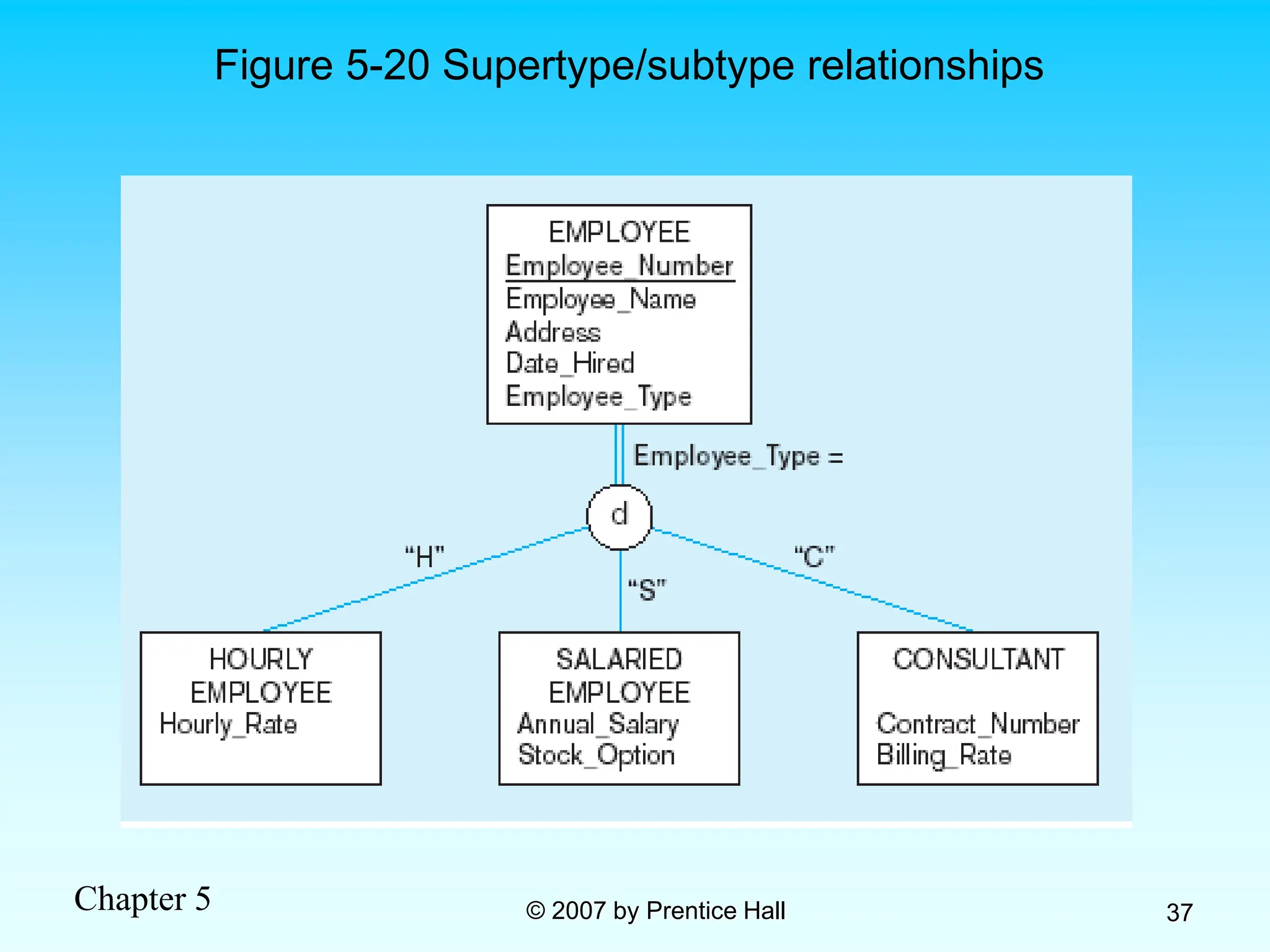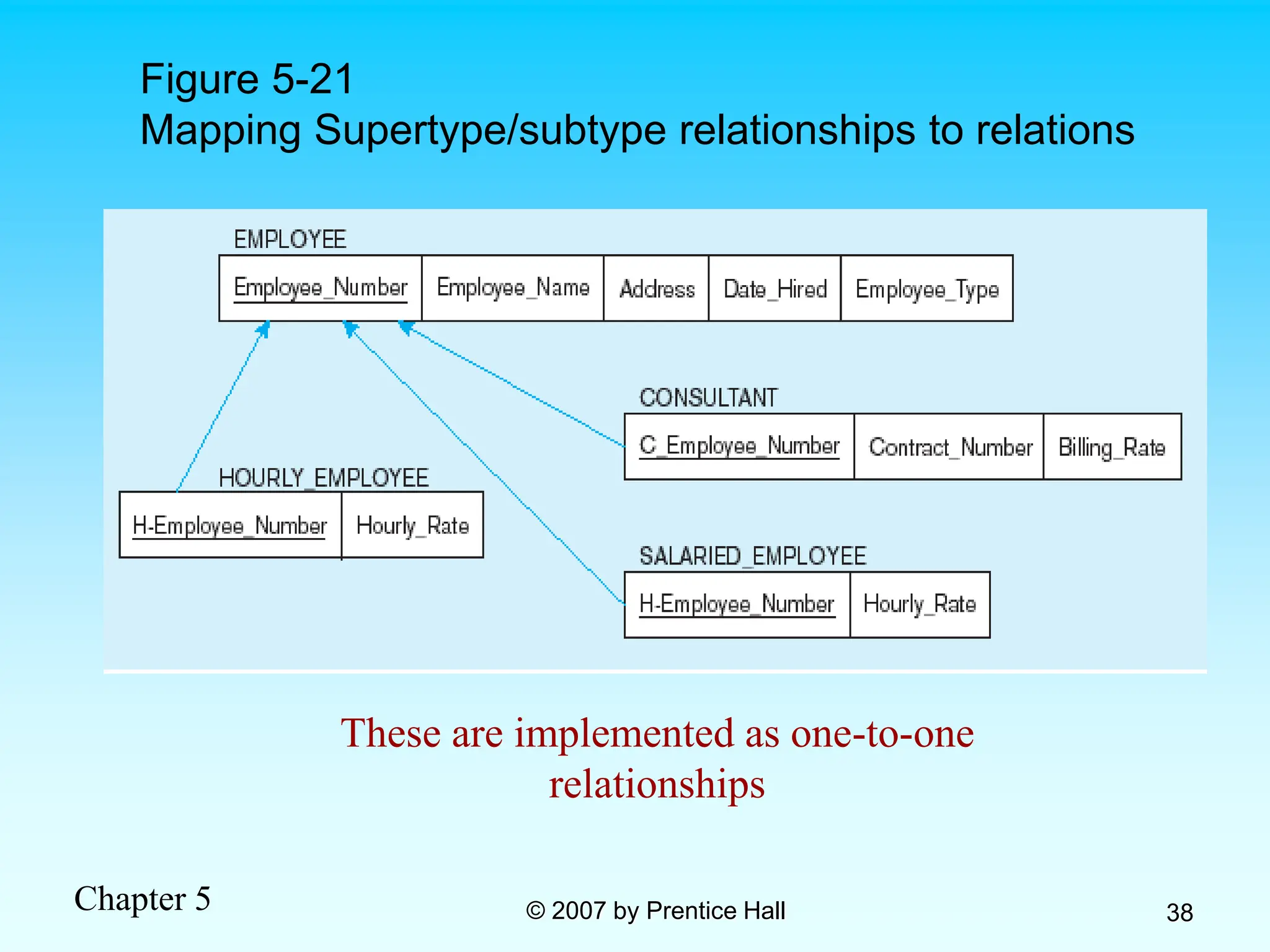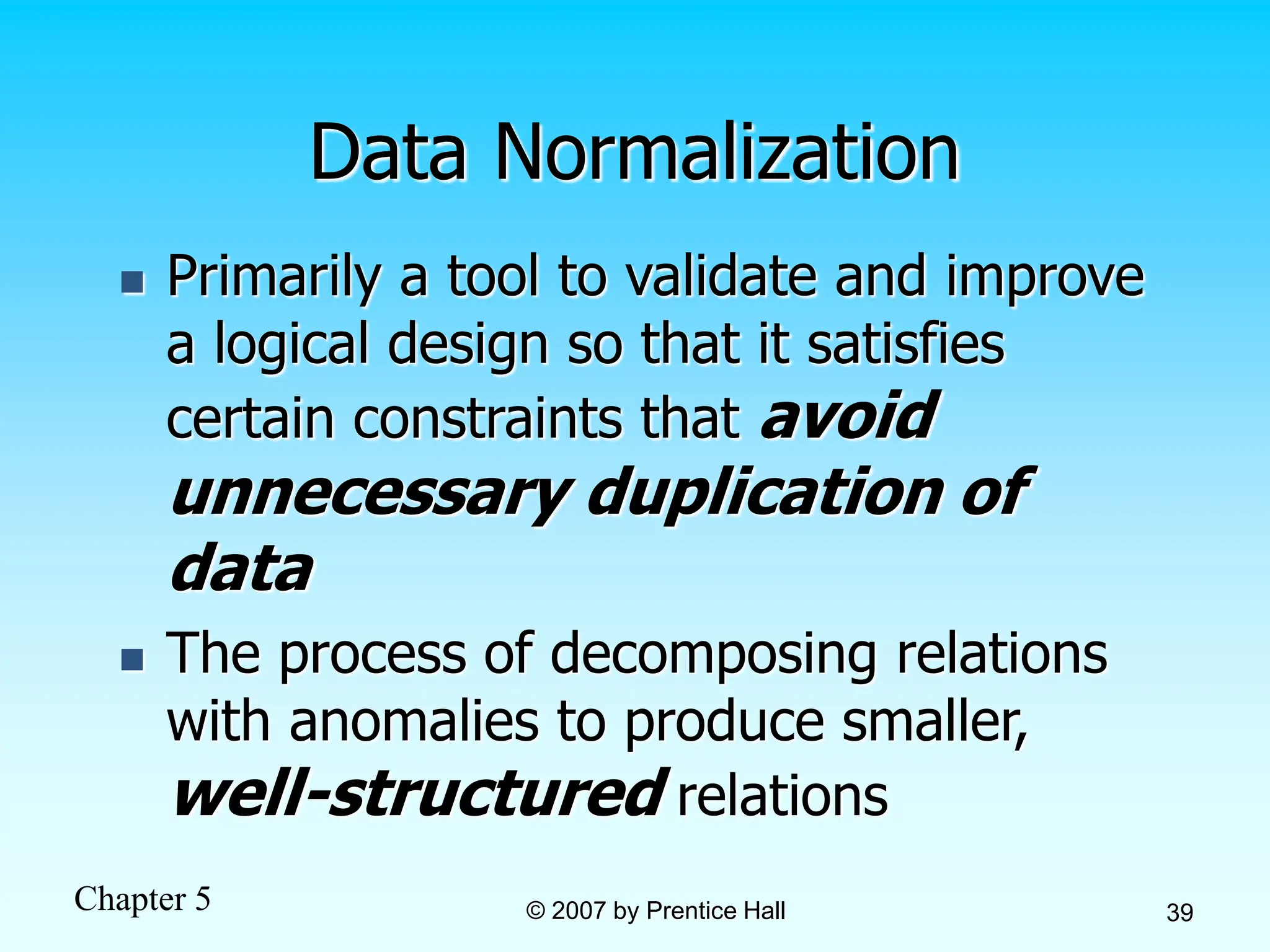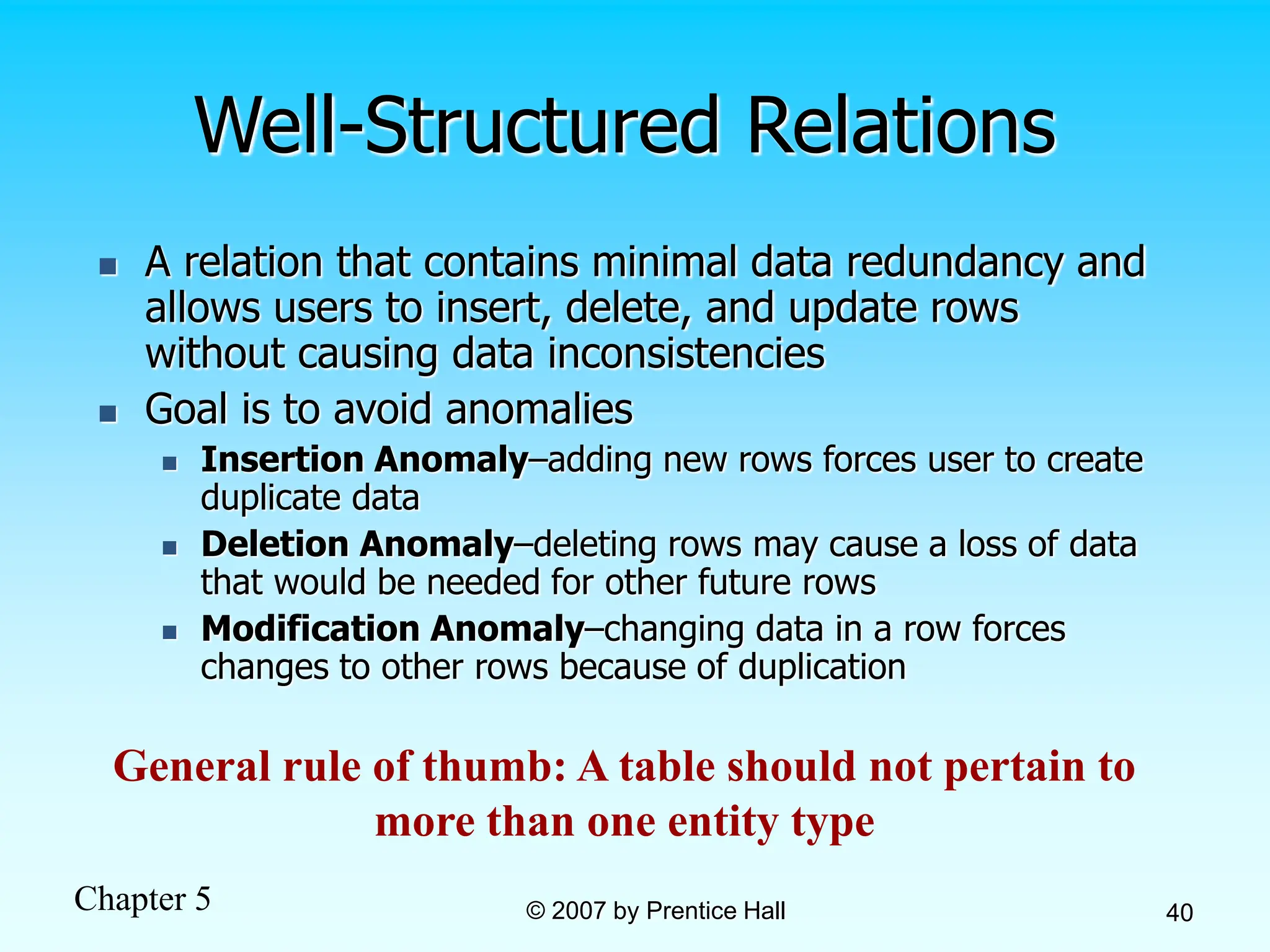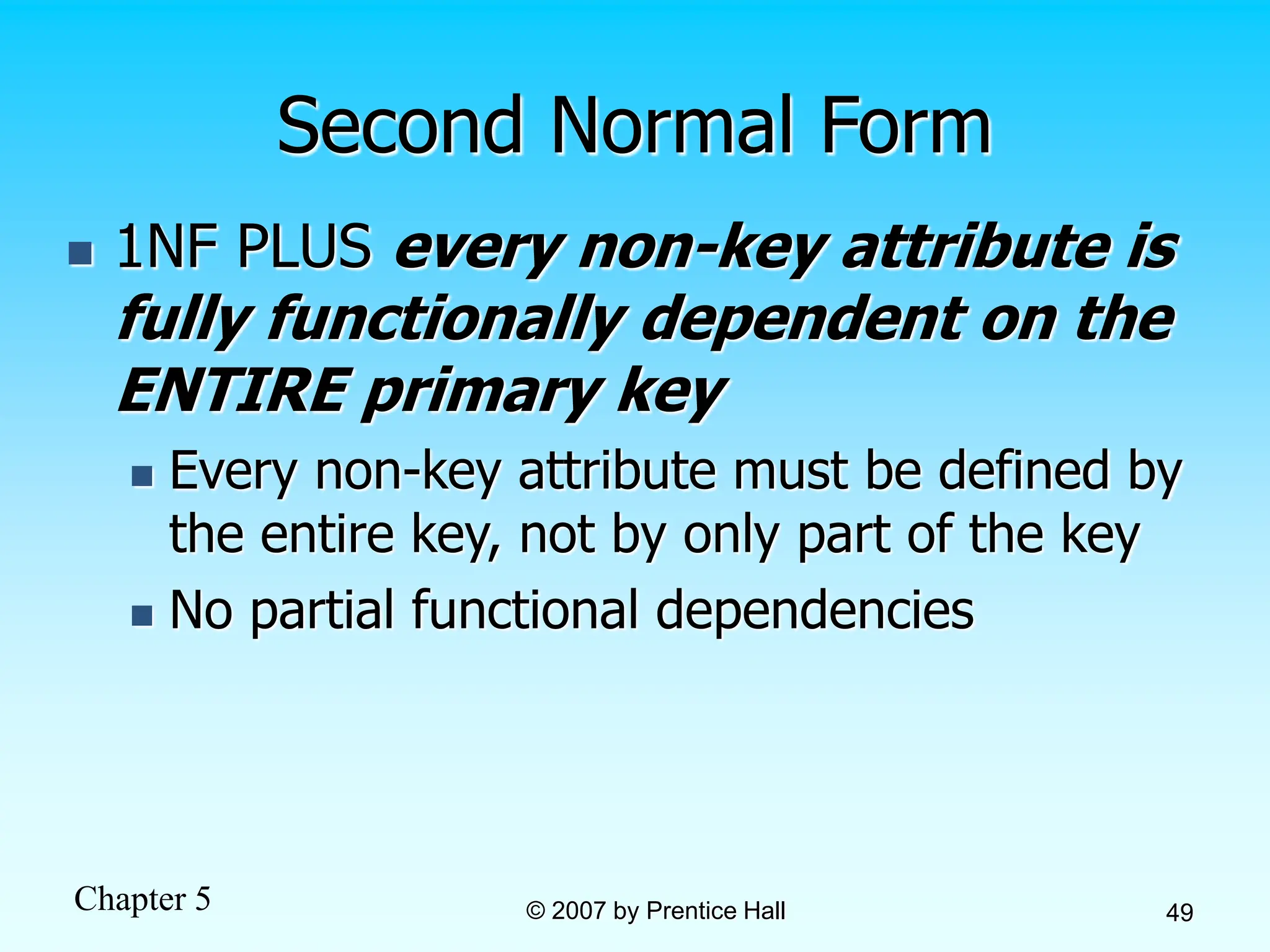Chapter 5 of 'Modern Database Management' covers logical database design and the relational model, emphasizing the properties of relations, keys, and constraints. It explains normalization processes for creating well-structured relations to avoid data anomalies and includes guidelines for transforming E-R diagrams into relations. Key concepts discussed include primary keys, foreign keys, integrity constraints, and the importance of maintaining data integrity throughout the database structure.




































